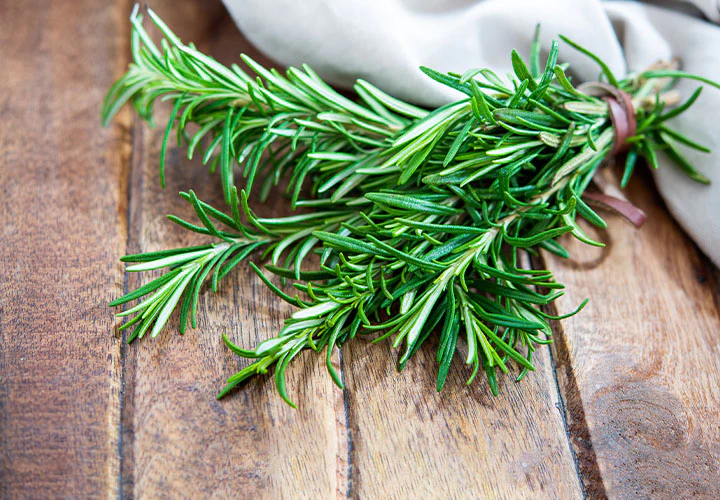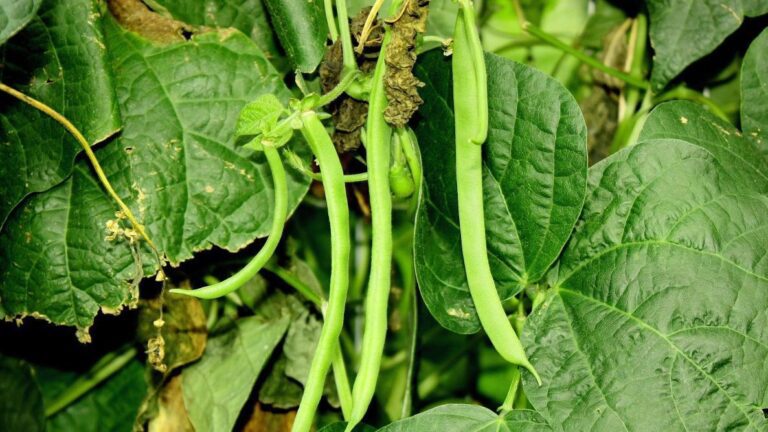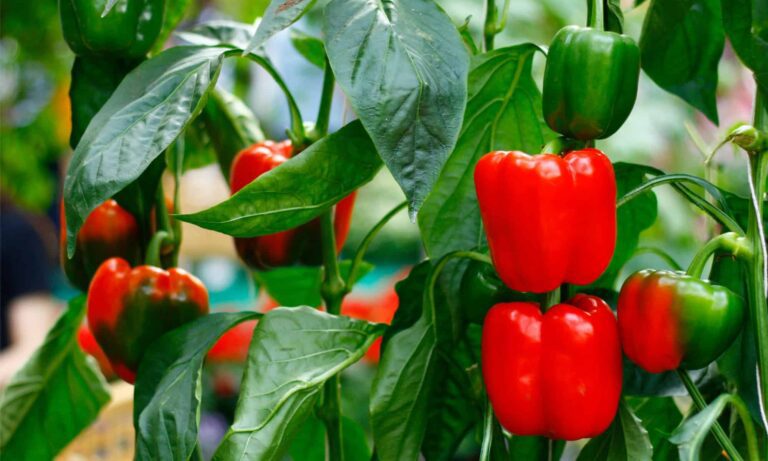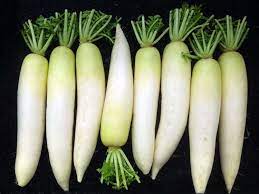Harvesting Rosemary the Right Way
Understanding the Growth Cycle of Rosemary
Rosemary (Rosmarinus officinalis) is a versatile and aromatic herb that is highly prized by gardeners and culinary enthusiasts alike. Understanding the growth cycle of rosemary is crucial for cultivating healthy and abundant plants.
Rosemary is a perennial herb that thrives in warm and sunny climates. It prefers well-drained soil with a pH level between 6 and 7.5. This herb requires at least six to eight hours of direct sunlight per day to grow optimally. During the spring and summer months, when temperatures are consistently above 60°F (15°C), rosemary experiences rapid growth and development. Its fragrant leaves remain green and lush, attracting pollinators such as bees and butterflies.
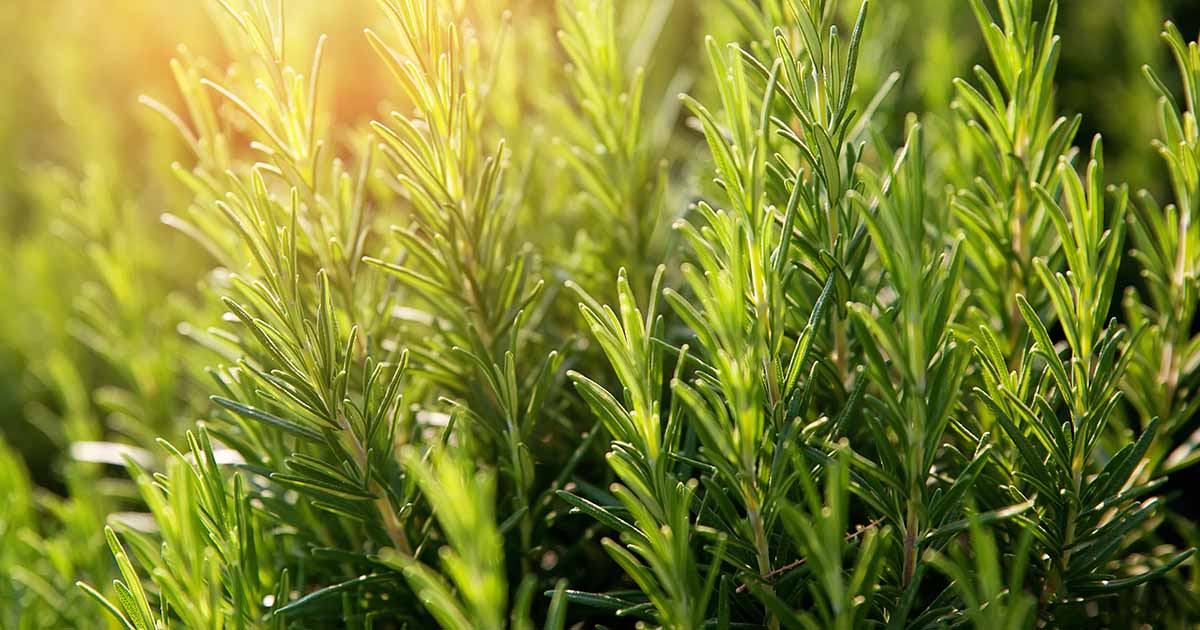
As the seasons transition into fall and winter, rosemary enters a period of dormancy. It becomes less active in terms of growth and conserves its energy for the colder months ahead. The plant’s growth rate slows down, and its leaves may turn a slightly duller shade of green. However, even in colder climates, rosemary retains its foliage and continues to add beauty to the garden. Understanding the growth cycle of rosemary allows gardeners to anticipate and accommodate the herb’s specific needs at each stage, promoting its overall health and longevity.
Identifying the Optimal Time for Harvesting Rosemary
When it comes to harvesting rosemary, timing is everything. This aromatic herb reaches its peak flavor and fragrance when harvested at the optimal time. So, how can you identify when the perfect moment for harvesting rosemary has arrived?
One indicator is the plant’s growth cycle. Rosemary is known to have two growth spurts each year: one in spring and another in early fall. During these periods, the plant produces an abundance of new growth, which is when it is ideal for harvesting. Keep an eye out for sturdy branches and vibrant leaves, as these are signs that the rosemary is at its best. Monitoring the plant closely and observing its growth patterns will give you a good sense of when to begin harvesting.
Selecting the Right Tools for Rosemary Harvesting
When it comes to selecting the right tools for rosemary harvesting, it is important to choose ones that will make the process efficient and gentle on the plant. The first tool to consider is a pair of pruning shears or sharp garden scissors. These tools are essential for cleanly cutting through the woody stems of rosemary without causing unnecessary damage. Look for shears with a bypass blade design, as this will provide a clean and precise cut.
Another handy tool to have is a pair of gardening gloves. While rosemary plants are not prickly like some other herbs, wearing gloves can protect your hands from any potential thorns or rough stems. Opt for gloves made of breathable material and with a good grip, as this will allow you to have better control when handling the plant.
In addition to pruning shears and gloves, having a small basket or container to collect the harvested rosemary can be helpful. This will prevent the leaves from becoming damaged or crushed during the harvesting process. Consider using a shallow basket or tray to allow for proper airflow and to avoid overcrowding the leaves.
By selecting the right tools for rosemary harvesting, you can ensure a smooth and successful experience. Pruning shears, gardening gloves, and a collection container are all essential items that will make the process easier and more efficient. With these tools on hand, you’ll be well-equipped to harvest your rosemary with care and precision.
Preparing the Rosemary Plant for Harvesting
Preparing the Rosemary Plant for Harvesting
As gardening enthusiasts, we understand the importance of proper preparation when it comes to harvesting rosemary. By taking the necessary steps to ensure the plant is ready for harvest, we can maximize its yield and quality.
Firstly, it is crucial to assess the maturity of the rosemary plant before harvesting. Rosemary typically takes around 90 to 120 days to reach maturity, and its optimal harvest time is when the plant is in full bloom. This stage ensures that the essential oils responsible for the herb’s flavors and aromas are at their peak concentration. Gently rubbing the leaves and smelling their fragrance is a helpful indicator of the herb’s readiness for harvest.
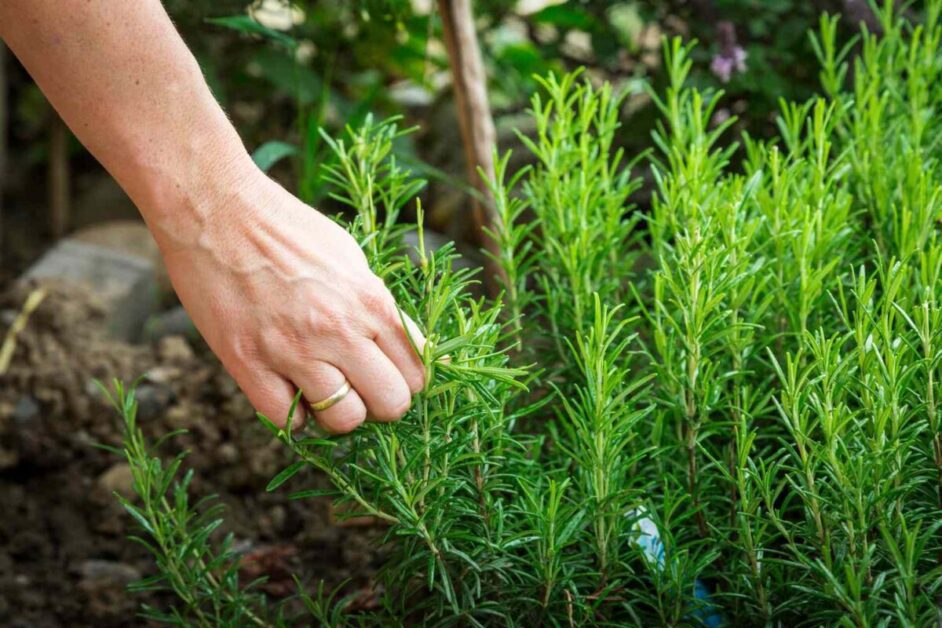
Additionally, it is essential to water the rosemary plant adequately before harvesting. While rosemary is a moderately drought-tolerant herb, ensuring that the soil is moist will make the stems and leaves more pliable, allowing for a smoother harvest. However, it is crucial to strike a balance and avoid overwatering the plant, as excessive moisture can lead to root rot and other detrimental issues. Striving for a consistent and appropriate moisture level will contribute to a successful rosemary harvest.
Proper Techniques for Pruning Rosemary
Pruning rosemary is an essential task that helps maintain the health and vigor of the plant while promoting optimal growth. By carefully removing specific parts of the plant, you can encourage better branching, control its size, and ensure an abundant yield of aromatic leaves. To achieve the best results, it’s crucial to follow proper pruning techniques.
One key technique in pruning rosemary is to focus on removing dead, damaged, or diseased branches. These branches not only detract from the overall appearance of the plant but can also serve as entry points for pests and diseases. Using clean, sharp pruning shears, carefully trim these branches back to healthy growth to prevent any further spread of damage. Additionally, removing these unwanted branches allows the plant to redirect its energy towards producing new, healthy growth.
Another important aspect of pruning rosemary is encouraging bushiness and preventing legginess. This can be achieved by regularly pinching back the tips of the plant’s branches, particularly during the active growing season. Pinching involves using your thumb and forefinger to firmly grasp the tip of the stem and gently snap it off. By doing so, you promote lateral branching and create a fuller, more compact appearance. It’s worth noting that pinching should be performed sparingly during the winter months when the plant is in a more dormant phase.
Proper and timely pruning of rosemary is essential for keeping the plant looking its best while ensuring a bountiful harvest of flavorful leaves. By following these techniques, you can maintain the overall health and shape of your rosemary plant, allowing it to thrive and contribute to your culinary adventures. Stay tuned for more expert advice on how to make the most of your harvest.
Harvesting Rosemary Leaves for Culinary Use
Harvesting fresh rosemary leaves for culinary use is an essential skill for any avid cook or gardener. The pungent flavor and distinctive aroma of rosemary can elevate a wide range of dishes, from roasted meats and vegetables to homemade breads and sauces.
When it comes to harvesting rosemary leaves, timing is crucial. The optimal time for harvesting rosemary is in the morning, before the sun has had a chance to evaporate the essential oils that give the herb its flavor. Choose stems that are healthy and vibrant, with plenty of green leaves. Avoid stems that appear wilted, discolored, or damaged.
To harvest rosemary leaves, use a sharp pair of pruning shears or garden scissors. Start by selecting the stem you wish to harvest and cut it just above a leaf node, which is where the leaves emerge from the stem. Make clean, angled cuts to promote healthy growth and minimize damage to the plant. Remember to harvest only what you need, leaving enough foliage on the plant to ensure its continued growth and vitality.
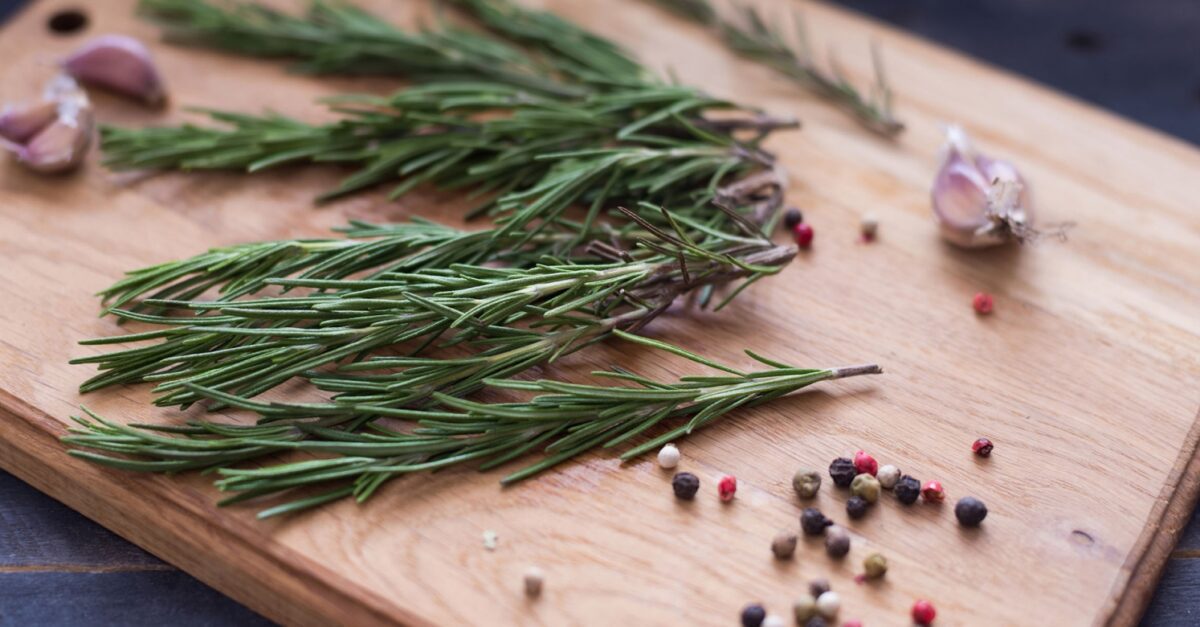
Once you’ve harvested your rosemary leaves, it’s important to store them properly to maintain their freshness and flavor. Rinse the leaves gently under cold water, pat them dry with a paper towel, and then place them in airtight containers or zip-top bags. Store them in the refrigerator and use them within a week for optimal flavor. Alternatively, you can freeze rosemary leaves by placing them in ice cube trays with a little water or olive oil. This allows you to conveniently add a burst of rosemary flavor to your dishes whenever you need it.
In conclusion, harvesting rosemary leaves for culinary use is a rewarding endeavor that allows you to enjoy the full potential of this versatile herb in your cooking. By selecting the right time, using the correct tools, and practicing proper storage techniques, you can ensure that your harvested rosemary leaves retain their vibrant flavor and aroma. So go ahead, venture into your garden or herb bed, and harvest some fresh rosemary leaves to elevate your next culinary creation.
Drying Rosemary: Preserving the Aroma and Flavor
Drying rosemary is a fundamental technique used by gardeners and culinary enthusiasts to preserve the aroma and flavor of this versatile herb. By removing moisture from the leaves, you can extend the shelf life of rosemary and enjoy its distinct fragrance and taste throughout the year.
When it comes to drying rosemary, there are a few methods to choose from. One popular technique is air drying, where you simply hang the rosemary upside down in a well-ventilated area until it becomes crisp and brittle. This method allows the herb to retain its essential oils, resulting in a more potent flavor. Another option is oven drying, which involves placing the rosemary on a baking sheet and drying it at a low temperature. While this method is faster, there is a higher risk of losing some of the herb’s aromatic compounds. Finally, you can also use a food dehydrator, which offers precise temperature control and evenly dries the rosemary. Whichever method you choose, it is important to handle the rosemary with care to prevent bruising or crushing the delicate leaves.
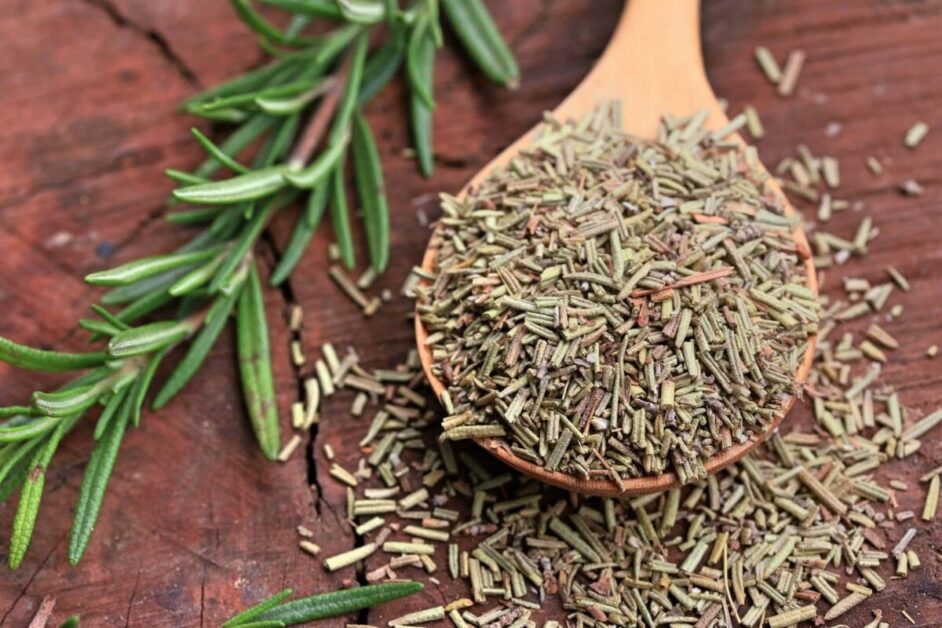
Dried rosemary can be stored in airtight containers in a cool, dark place for up to six months. Before using the dried herb, it is advisable to crush the leaves to release their flavor. Whether you’re adding rosemary to soups, stews, roasted vegetables, or homemade bread, dried rosemary can add a burst of aromatic goodness to your culinary creations. So seize the opportunity to dry rosemary and enjoy its delightful aroma and flavor all year round.
Harvesting Rosemary for Medicinal Purposes
When it comes to harvesting rosemary for medicinal purposes, timing is everything. Rosemary contains potent compounds that possess numerous health benefits, such as anti-inflammatory properties and the ability to boost cognitive function. To maximize these benefits, it is crucial to harvest the herb at the right time.
The optimal time for harvesting rosemary leaves for medicinal use is generally when the plant is in full bloom. This is when the rosemary plant is at its peak in terms of essential oil content, which is responsible for its therapeutic properties. When the plant is in full bloom, the leaves are fragrant and vibrant, indicating their high concentration of beneficial compounds. Therefore, it is recommended to harvest rosemary leaves for medicinal purposes during this stage to ensure maximum potency and effectiveness.
Using Fresh Rosemary in Homemade Beauty Products
Rosemary, with its distinct fragrance and numerous health benefits, has long been used in homemade beauty products. The incorporation of fresh rosemary into these products can provide a natural and effective solution for various beauty needs.
One popular use of fresh rosemary is in homemade haircare products. The herb is known for its ability to stimulate hair growth and improve hair health. When infused in oil or combined with other natural ingredients such as aloe vera or coconut oil, rosemary can nourish the scalp, strengthen hair follicles, and reduce dandruff. This can result in stronger, shinier, and healthier hair.
Additionally, fresh rosemary can be infused in water to create a refreshing facial toner or incorporated into DIY face masks. The antibacterial properties of rosemary can help combat acne-causing bacteria and reduce inflammation, while its antioxidants can protect the skin against free radicals that contribute to premature aging. The herb’s natural astringent properties can also help tighten pores, leaving the skin feeling toned and refreshed.
Using fresh rosemary in homemade beauty products not only allows for a natural alternative to commercially available products but also provides the added benefit of customization. Whether you’re looking to enhance your hair’s vitality or rejuvenate your skin, incorporating fresh rosemary into your beauty routine can offer a multitude of benefits. So why not explore the various ways you can harness the power of this wonderful herb to enhance your natural beauty? The possibilities are endless!
Below there is a table about the beauty products that can be made out of rosemary:
| Beauty Product | Description |
|---|---|
| Rosemary Essential Oil | Extracted from rosemary leaves, used in skincare products for its therapeutic and aromatic properties. |
| Rosemary Scented Candles | Candles infused with rosemary essential oil, providing a refreshing and aromatic ambiance. |
| Rosemary Bath Salts | Bath salts blended with rosemary essential oil for a relaxing and aromatic bathing experience. |
| Rosemary Hair Care Products | Shampoos, conditioners, and hair oils containing rosemary extracts known for promoting scalp health. |
Storing Rosemary Properly to Maintain Freshness
Properly storing rosemary is crucial to maintain its freshness and preserve its aroma and flavor. Whether you have harvested fresh rosemary from your garden or bought it from the store, following the right storage techniques will ensure that you can enjoy its aromatic and culinary benefits for an extended period.
To store rosemary properly, start by gently patting the leaves dry to remove any excess moisture. Moisture can cause the herb to rot quickly, so it is essential to remove as much of it as possible. Next, wrap the rosemary loosely in a paper towel or place it in a perforated plastic bag. This allows air to circulate around the herb while reducing the risk of excess moisture buildup. Finally, store the rosemary in the refrigerator’s crisper drawer or in a cool, dark place away from direct sunlight. The cool temperature will help slow down the herb’s decomposition process, preserving its freshness for a longer time.
By following these simple steps, you can ensure that your harvested or store-bought rosemary remains fresh and vibrant, ready to enhance your culinary creations with its distinct aroma and flavor. Properly stored rosemary can retain its qualities for up to two weeks, allowing you to enjoy its earthy essence in various dishes or infusions. So, take a few extra minutes to store your rosemary properly, and savor this versatile herb’s delightful essence in your culinary adventures.
Propagating Rosemary: Harvesting Cuttings for New Plants
When it comes to propagating rosemary, harvesting cuttings is a commonly used method to create new plants. This technique allows gardeners to expand their rosemary collection and ensure a continuous supply of this aromatic herb. Harvesting cuttings for propagating rosemary is a straightforward process that can be done with a few basic steps.
To begin, select a healthy rosemary plant and identify a stem that is about 3 to 4 inches long. It’s important to choose a stem that is free from disease or pest damage to ensure the success of the propagation. Using a sharp pair of garden shears or scissors, make a clean diagonal cut just below a leaf node. Removing the lower leaves from the cutting will encourage root growth. Next, you’ll want to dip the cut end of the stem into a rooting hormone powder to promote root development. Once the stem is coated, place it into a small container filled with a well-draining potting mix, making sure the soil is firmly packed around the cutting. Finally, water the cutting thoroughly and place it in a warm and sunny location, ensuring it receives indirect light. With proper care and patience, you’ll soon have new rosemary plants ready to be transplanted into your garden or potted for indoor use.
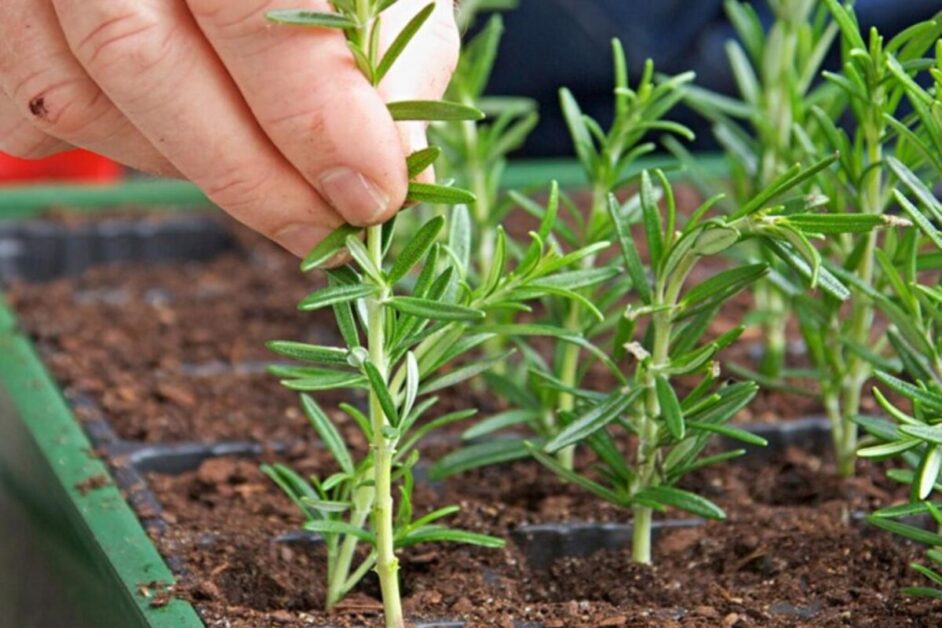
Propagating rosemary through the harvesting of cuttings is an excellent way for gardeners to expand their herb collection. This method offers a high success rate and allows for the cultivation of multiple plants from one healthy specimen. By following the proper techniques and providing the necessary care, you can enjoy a bountiful supply of rosemary for various culinary and medicinal purposes. Keep in mind that propagating rosemary takes time, with rooted cuttings typically ready for transplantation in 6-8 weeks. So, if you’re looking to propagate your beloved rosemary plants, harvesting cuttings is a reliable and rewarding approach worth considering.
Harvesting Rosemary Seeds for Future Cultivation
When it comes to harvesting rosemary seeds for future cultivation, timing is crucial. Rosemary plants produce small, delicate flowers that eventually develop into seed pods. To ensure the seeds are fully mature and ready for harvesting, it is important to wait until the seed pods turn brown and begin to open. This indicates that the seeds inside are mature and viable for planting. Carefully inspect the seed pods, gently squeezing them to see if they release any seeds. If the seeds come out easily, it is a sign that they are ready for harvesting. However, if the pods are still tightly closed or the seeds are green in color, it is best to give them more time to mature.
To harvest the rosemary seeds, hold a clean container, such as a small bowl or tray, under the seed pod. Gently tap the pod with your finger or a small tool, causing the seeds to fall into the container. Be cautious not to shake the pod too vigorously as this may cause immature seeds to be collected. Once the seeds have been harvested, remove any debris or unwanted plant matter, ensuring that you are left with clean and viable seeds. It is recommended to store the seeds in a cool, dark, and dry place, preferably in an airtight container to preserve their quality and viability until you are ready to plant them. With proper harvesting techniques and storage, you can collect and store rosemary seeds effectively for future cultivation.
Tips for Harvesting Rosemary in Different Climates
Harvesting rosemary can be a rewarding experience, but it’s important to understand that different climates can affect the growth and quality of the herb. Whether you’re in a hot and arid region or a cooler and more temperate area, here are some tips to help you successfully harvest rosemary in different climates.
In warmer climates, rosemary tends to thrive and grow vigorously. To ensure optimal harvesting, it’s important to regularly prune the plant to promote bushier growth. This can be done by removing the top few inches of new growth, which will help stimulate branching and provide you with a fuller plant to harvest from. Additionally, it’s recommended to harvest rosemary early in the morning or late in the evening when the temperatures are cooler. This helps preserve the essential oils and flavors of the herb, ensuring a more aromatic and flavorful harvest. Remember to use sharp garden shears or scissors to make clean and precise cuts, minimizing any damage to the plant.
Watch the video to learn more about rosemary harvesting.
Avoiding Common Mistakes When Harvesting Rosemary
When it comes to harvesting rosemary, there are a few common mistakes that many gardeners make. One common mistake is harvesting too much at once. While it can be tempting to harvest a large amount of rosemary all at once, doing so can put too much stress on the plant and hinder its ability to recover. It’s best to only harvest up to one-third of the plant at a time, allowing it to continue growing and thriving.
Another mistake to avoid is waiting too long to harvest. Rosemary leaves are most flavorful and aromatic when they are young and vibrant. If you leave the rosemary on the plant for too long, the flavors may become bitter and the aroma may diminish. To ensure the best quality, it’s important to harvest rosemary before it starts to flower. By keeping an eye on the plant and regularly inspecting the leaves, you’ll be able to determine the optimal time for harvesting.
Troubleshooting Issues During Rosemary Harvesting
When it comes to harvesting rosemary, there are a few common issues that gardeners may encounter. One issue is difficulty in determining the right time to harvest the herb. Rosemary leaves are at their best when harvested before the plant starts flowering, as this is when they contain the highest concentration of essential oils and flavors. However, determining the optimal time can be challenging, especially for beginners. It is important to closely observe the plant for signs of budding or blooming to ensure that you harvest the leaves at their peak. Additionally, factors such as weather conditions and the overall health of the plant can also affect the timing of the harvest.
Another issue that may arise during rosemary harvesting is the risk of over-pruning or damaging the plant. While it’s tempting to harvest as much rosemary as possible, it’s crucial to be mindful of the plant’s health and growth. Over-pruning can weaken the plant and hinder its ability to produce new foliage. It is recommended to only harvest a third of the plant at a time, allowing the remaining foliage to continue photosynthesis and promote healthy growth. Furthermore, using sharp pruning shears or scissors can help minimize damage to the plant, ensuring clean cuts that heal quickly. Taking these precautions will help troubleshoot potential issues during the rosemary harvesting process and maintain the vitality of the plant for future harvests.
Here is a table about some of the major issues and some troubleshooting tips:
| Issue | Description | Tips for Troubleshooting |
|---|---|---|
| Difficulty in Determining Harvest Time | Harvesting rosemary before flowering for optimal flavor is challenging, especially for beginners. | – Observe signs of budding or blooming. – Harvest before flowering. – Monitor weather and plant health. |
| Risk of Over-Pruning or Damaging the Plant | Over-pruning weakens the plant. | – Harvest one-third at a time. – Allow remaining foliage for growth. – Use sharp tools for clean cuts. |
| Maintaining Plant Vitality for Future Harvests | Ensuring long-term plant health is vital. | – Adopt a conservative harvesting approach. – Provide proper care. – Address pests promptly. |
| Monitoring Signs of Budding or Blooming | Recognizing visual cues is crucial. | – Regularly check for budding or blooming. – Harvest before these stages for the best flavor. |
| Using Sharp Pruning Tools | Sharp tools minimize damage. | – Use sharp shears for clean cuts. – Avoid tearing or crushing for faster healing. |
| Balancing Harvest Quantity and Plant Health | Striking a balance is key. | – Prioritize plant health. – Follow sustainable harvesting guidelines. – Allow time for recovery between harvests. |
Exploring Creative Uses for Harvested Rosemary
Rosemary is a versatile herb that can add a burst of flavor and aroma to a wide range of dishes. However, its uses extend beyond the culinary world, as creative individuals have found unique ways to incorporate harvested rosemary into various aspects of their everyday lives.
One creative use for harvested rosemary is in homemade beauty products. The aromatic properties of rosemary make it a popular choice for natural skincare and haircare products. Rosemary-infused oils can be used in DIY facial scrubs, hair masks, and even homemade soaps. The herb’s soothing properties can help improve the condition of the skin and hair, leaving them feeling refreshed and revitalized.
Another creative way to utilize harvested rosemary is by incorporating it into homemade home fragrance solutions. Dried rosemary can be added to potpourri blends or simmered in water with other aromatic ingredients, such as citrus peels or cinnamon sticks, to create a fragrant and inviting aroma throughout the home. Additionally, small sprigs of fresh rosemary can be placed in decorative dishes or hung as natural air fresheners.
From beauty products to home fragrances, there is no shortage of creative uses for harvested rosemary. This versatile herb can not only enhance culinary creations but also add a touch of nature and freshness to various aspects of our daily lives. So, the next time you harvest rosemary from your garden, consider exploring these creative avenues and see how the herb can elevate your everyday experiences.
Can rosemary be used in homemade cleaning products?
Yes, rosemary can be used in homemade cleaning products as it has natural antibacterial properties. It can be used as an ingredient in homemade disinfectant sprays or added to homemade laundry detergent for a fresh scent.
Is it possible to use fresh rosemary in baking?
Absolutely! Fresh rosemary can be used in baking to add a unique flavor to bread, cookies, or even desserts. Just make sure to finely chop the rosemary leaves before adding them to the batter or dough.
Are there any alternative uses for harvested rosemary besides culinary and medicinal purposes?
Yes, there are many creative uses for harvested rosemary. It can be added to homemade potpourri or used in DIY scented candles for a delightful aroma. Rosemary can also be infused into oils or vinegar to create homemade beauty products like hair rinses or facial toners.
Can I harvest rosemary during any season?
While rosemary can be harvested throughout the year, it is best to harvest it during the plant’s active growing season, which is usually in the spring or summer. This is when the rosemary plant is at its peak and the leaves will have the most flavor and aroma.
How long can harvested rosemary be stored for?
Properly stored, harvested rosemary can last for several weeks. The best way to store rosemary is by placing the fresh sprigs in a plastic bag, removing as much air as possible, and storing it in the refrigerator. Alternatively, you can also dry the rosemary for long-term storage.

